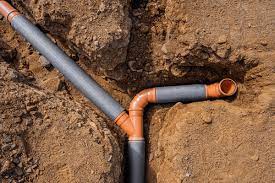In the intricate tapestry of urban infrastructure, there exists a network of unsung heroes that silently perform a crucial role in maintaining the hygiene and functionality of our cities—the pipes and drains. Often overlooked, these essential components form the backbone of a well-functioning urban ecosystem. In this article, we will explore the significance of pipes and drains, their diverse types, and their vital role in managing wastewater and stormwater in our communities.
The Anatomy of Drainage Systems:
Drainage systems are an integral part of any urban setting, ensuring the efficient disposal of wastewater and stormwater to prevent flooding and contamination. Central to this system are pipes that transport liquids from various sources to treatment plants or disposal sites. These pipes come in various materials, including PVC, concrete, and metal, each chosen for its specific properties and durability.
Underground, these pipes form an intricate network that navigates beneath streets, buildings, and public spaces. The design and construction of this network demand careful planning to ensure optimal functionality, durability, and minimal environmental impact.
Wastewater Management:
One of the primary functions of pipes and drains is the management of wastewater. In residential, commercial, and industrial areas, sewage pipes collect water from toilets, sinks, and other plumbing fixtures, transporting it to treatment plants. Here, the water undergoes rigorous processes to remove impurities before being safely reintroduced into the environment or utilized for non-potable purposes.
The efficiency of these wastewater systems is crucial for preventing the spread of diseases and maintaining public health. Regular maintenance and upgrades to aging infrastructure are essential to ensure the continued effectiveness of these systems.
Stormwater Drainage:
Beyond wastewater, pipes, and drains play a crucial role in managing stormwater. Storm drains, typically found along streets and in public spaces, collect rainwater and prevent it from pooling, causing flooding or erosion. Stormwater pipes carry this excess water away from urban areas, directing it towards natural water bodies or treatment facilities.
Effective stormwater management is vital to mitigate the impact of heavy rainfall and prevent urban flooding. The design of stormwater drainage systems considers factors such as topography, climate, and urban development to create resilient and efficient networks.
Challenges and Innovations:
The maintenance of pipes and drains poses ongoing challenges for urban planners and municipal authorities. Aging infrastructure, clogs, and the impact of climate change can strain these systems, leading to disruptions and potential hazards. To address these challenges, ongoing investments in maintenance, repairs, and modernization are necessary.
Innovations in pipe materials, such as the use of corrosion-resistant alloys and advanced polymers. Contribute to the longevity and durability of drainage systems. Smart technologies, including sensors and real-time monitoring. Enable authorities to detect issues promptly and respond proactively, reducing the risk of failures.
Environmental Considerations:
The impact of pipes and drains extends beyond their immediate functionality; they also have environmental implications. Properly managed wastewater treatment prevents pollution, safeguarding aquatic ecosystems. Additionally, well-designed stormwater management reduces the risk of soil erosion and contamination of natural water bodies.
Efforts to promote sustainability in urban drainage systems include the incorporation of green infrastructure, such as porous pavements and green roofs. Which helps absorb and manage stormwater naturally. These eco-friendly solutions contribute to the overall resilience and environmental friendliness of urban drainage networks.
Conclusion:
In the unseen underworld of urban infrastructure, pipes and drains emerge as silent heroes, diligently carrying out the essential task of managing wastewater and stormwater. Their role in preserving public health, preventing flooding, and promoting environmental sustainability cannot be overstated. As we continue to build and develop our cities. We must recognize and invest in the maintenance and innovation of these vital components to ensure the resilience and efficiency of our urban ecosystems for generations to come.

